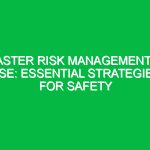Welcome, team! Today, we’re going to delve into an essential topic that impacts our daily operations and safety at work: Embracing Change in the Workplace. As we navigate through this discussion, we aim to equip you with the knowledge and mindset needed to embrace change effectively, ensuring a safe and secure work environment for all.
The Importance of Embracing Change in the Workplace
Change is inevitable, especially in the dynamic environment of health, safety, and environment (HSE) practices. Embracing Change in the Workplace is crucial as it allows us to adapt to new technologies, procedures, and regulations, ultimately enhancing our safety measures and preventing accidents.
By embracing change, we can stay ahead of potential risks, improve our processes, and create a culture of continuous improvement. It empowers us to respond proactively to evolving challenges and ensures that our work environment remains safe and conducive for everyone.
Key Aspects of Embracing Change in the Workplace
Embracing Change in the Workplace involves several key aspects that are essential for our HSE practices:
- Adaptability: Being open to change and willing to learn new ways of working.
- Communication: Effectively communicating changes to team members and ensuring clarity.
- Training: Providing adequate training and resources to support the implementation of changes.
- Risk Assessment: Assessing potential risks associated with changes and implementing mitigation strategies.
By understanding and incorporating these aspects into our daily operations, we can enhance our safety practices and create a resilient workplace culture.
Potential Hazards and Safety Considerations
When embracing change, it’s essential to be aware of potential hazards and safety considerations that may arise. These could include:
- Unfamiliar Procedures: Ensuring that all team members are trained on new procedures to prevent accidents.
- Equipment Changes: Conducting thorough inspections and maintenance when introducing new equipment to avoid malfunctions.
- Environmental Factors: Adapting to changes in the work environment to maintain safety standards.
By proactively addressing these considerations, we can mitigate risks and ensure the safety of everyone in the workplace.
Best Practices for Embracing Change
To effectively embrace change in the workplace and boost safety, consider the following best practices:
- Stay Informed: Keep up to date with industry trends, regulations, and best practices.
- Collaborate: Work together as a team to implement changes and share knowledge.
- Seek Feedback: Encourage open communication and feedback loops to address concerns and improve processes.
- Continuous Learning: Embrace a culture of continuous learning and improvement to adapt to changes effectively.
By following these best practices, we can create a workplace that is resilient, safe, and adaptable to change.
Regulations and Compliance
It’s important to note that embracing change in the workplace also involves compliance with regulations and standards set forth by regulatory bodies and our company policies. By adhering to these regulations, we not only ensure our safety but also fulfill our legal obligations.
Compliance with regulations such as Occupational Safety and Health Administration (OSHA) standards and company-specific safety protocols is crucial in maintaining a safe work environment. It is our collective responsibility to uphold these standards and prioritize safety in all our operations.
Conclusion
As we conclude this Toolbox Talk on Embracing Change in the Workplace, let us remember the significance of adapting to change in our daily operations. By embracing change, we not only enhance our safety practices but also foster a culture of continuous improvement and innovation.
Thank you for your attention and commitment to safety. Let’s work together to embrace change, boost workplace safety, and ensure a secure environment for all.


